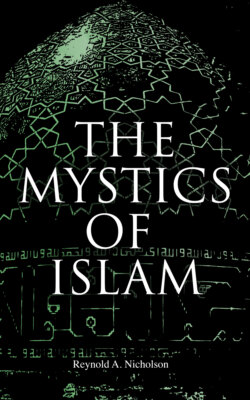Читать книгу The Mystics of Islam - Reynold A. Nicholson - Страница 7
III. Gnosticism3
ОглавлениеThough little direct evidence is available, the conspicuous place occupied by the theory of gnosis in early Sūfī speculation suggests contact with Christian Gnosticism, and it is worth noting that the parents of Maʿrūf al-Karkhī, whose definition of Sūfism, as ‘the apprehension of divine realities’ was quoted on the first page of this Introduction, are said to have been Sābians, i.e. Mandæans, dwelling in the Babylonian fenland between Basra and Wāsit. Other Moslem saints had learned ‘the mystery of the Great Name.’ It was communicated to Ibrāhīm ibn Adham by a man whom he met while travelling in the desert, and as soon as he pronounced it he saw the prophet Khadir (Elias). The ancient Sūfīs borrowed from the Manichæans the term siddīq, which they apply to their own spiritual adepts, and a later school, returning to the dualism of Mānī, held the view that the diversity of phenomena arises from the admixture of light and darkness.
“The ideal of human action is freedom from the taint of darkness; and the freedom of light from darkness means the self-consciousness of light as light.”4
The following version of the doctrine of the seventy thousand veils as explained by a modern Rifāʿī dervish shows clear traces of Gnosticism and is so interesting that I cannot refrain from quoting it here:
“Seventy Thousand Veils separate Allah, the One Reality, from the world of matter and of sense. And every soul passes before his birth through these seventy thousand. The inner half of these are veils of light: the outer half, veils of darkness. For every one of the veils of light passed through, in this journey towards birth, the soul puts off a divine quality: and for every one of the dark veils, it puts on an earthly quality. Thus the child is born weeping, for the soul knows its separation from Allah, the One Reality. And when the child cries in its sleep, it is because the soul remembers something of what it has lost. Otherwise, the passage through the veils has brought with it forgetfulness (nisyān): and for this reason man is called insān. He is now, as it were, in prison in his body, separated by these thick curtains from Allah.
“But the whole purpose of Sūfism, the Way of the dervish, is to give him an escape from this prison, an apocalypse of the Seventy Thousand Veils, a recovery of the original unity with The One, while still in this body. The body is not to be put off; it is to be refined and made spiritual—a help and not a hindrance to the spirit. It is like a metal that has to be refined by fire and transmuted. And the sheikh tells the aspirant that he has the secret of this transmutation. ‘We shall throw you into the fire of Spiritual Passion,’ he says, ‘and you will emerge refined.’”5
3. Cf. Goldziher, “Neuplatonische und gnostische Elemente im Hadīt,” in Zeitschrift für Assyriologie, xxii. 317 ff.
4. Shaikh Muhammad Iqbal, The Development of Metaphysics in Persia (1908), p. 150.
5. “The Way” of a Mohammedan Mystic, by W. H. T. Gairdner (Leipzig, 1912), pp. 9 f.
